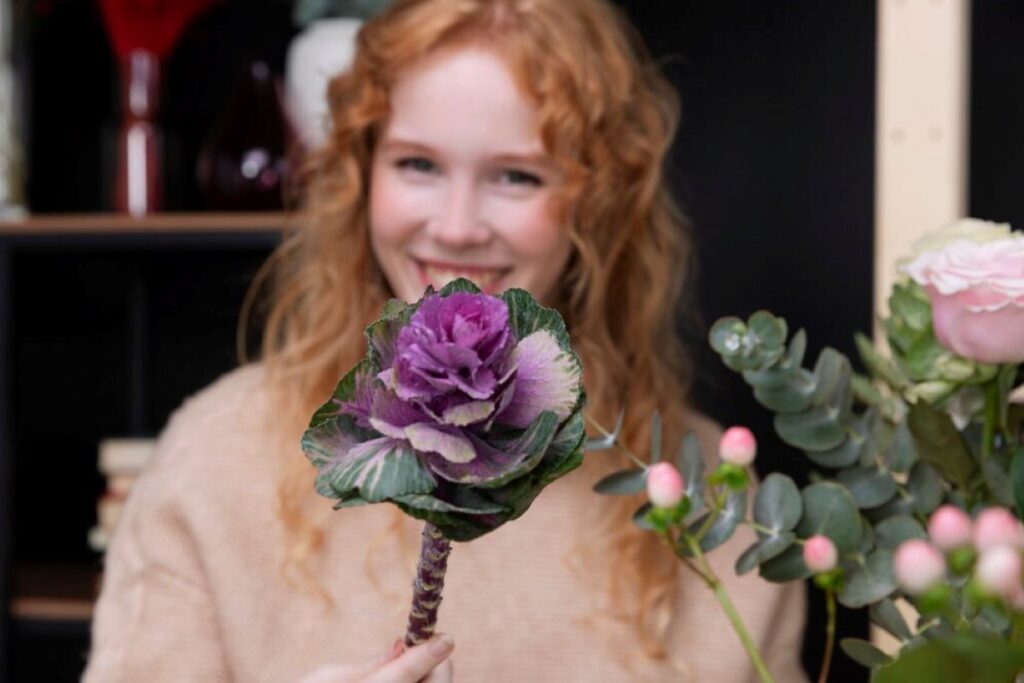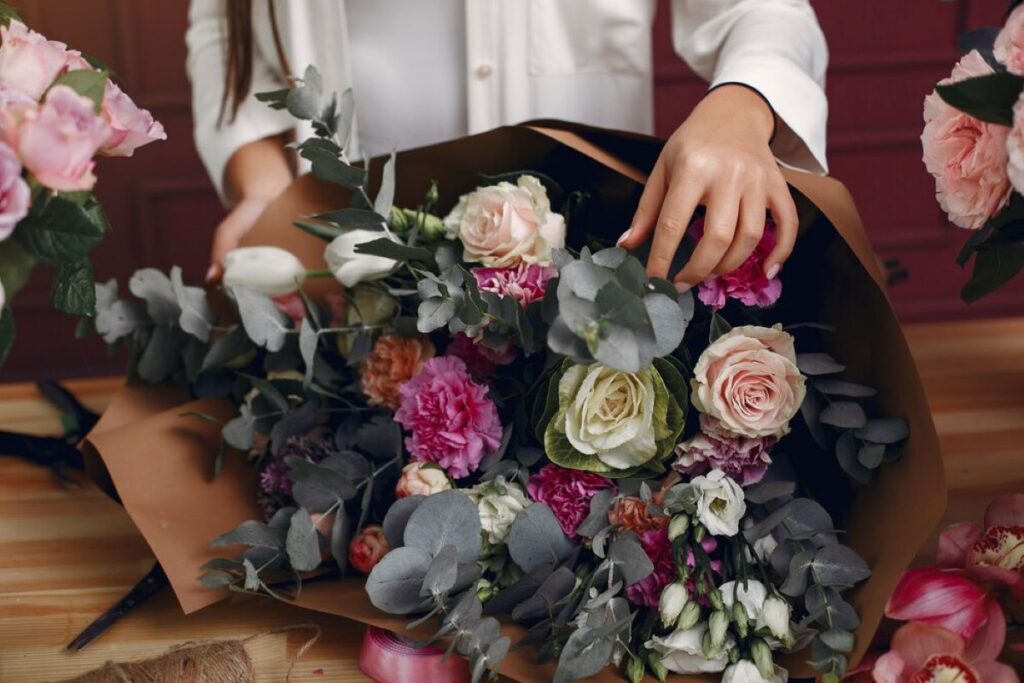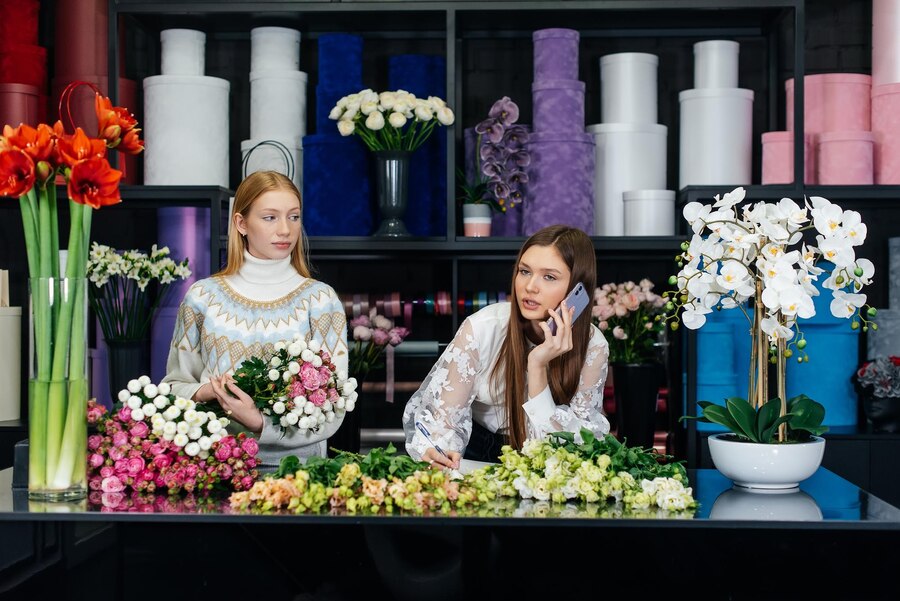Choosing the right colour palette for floral arrangements is an essential aspect of floristry. The colours selected can evoke emotions, set the mood, and even convey messages. For florists in Waverton, understanding how to select the perfect colours can significantly enhance their creations and appeal to their clients. This article will explore the principles of colour theory, the significance of colour in floral design, and practical tips for choosing the right colour palette.
The Basics of Colour Theory
Colour theory is the foundation of any artistic endeavour, including floristry. It encompasses the colour wheel, colour harmony, and the psychological effects of colours. By grasping these concepts, florist Waverton can create visually appealing arrangements that resonate with their audience.
The Colour Wheel
The colour wheel is a circular diagram that organises colours based on their relationships. It consists of primary, secondary, and tertiary colours. Primary colours—red, blue, and yellow—cannot be created by mixing other colours. Secondary colours—green, orange, and purple—are formed by mixing primary colours. Tertiary colours are created by mixing a primary colour with a secondary colour.
Florists can use the colour wheel to identify complementary colours, which are opposite each other on the wheel, and analogous colours, which are next to each other. Understanding these relationships can help create balanced and harmonious floral arrangements. For instance, a bouquet featuring bright yellow sunflowers paired with deep purple asters can create a striking visual contrast, drawing the eye and evoking a sense of joy. Similarly, a soft arrangement of pink peonies and lavender can produce a calming effect, perfect for a tranquil setting.
Colour Harmony
Colour harmony refers to the aesthetically pleasing arrangement of colours. There are several types of colour harmonies that florists can utilise:
- Complementary Harmony: Utilises colours opposite each other on the colour wheel, creating a vibrant contrast.
- Analogous Harmony: Involves colours that are next to each other, resulting in a serene and comfortable combination.
- Triadic Harmony: Consists of three colours that are evenly spaced around the colour wheel, offering a vibrant and balanced look.
By experimenting with these harmonies, florists can create unique arrangements that capture attention and evoke specific feelings. For example, using a triadic harmony of red, yellow, and blue can result in a lively and energetic display, perfect for celebratory occasions such as weddings or parties. Additionally, understanding the psychological implications of colours can further enhance the emotional impact of floral designs. Warm colours like reds and oranges can stimulate excitement and passion, while cool colours like blues and greens often convey calmness and relaxation, making them ideal for soothing environments such as hospitals or spas.
The Psychological Impact of Colour
Colours have the power to influence emotions and perceptions. Understanding the psychological impact of colours can aid florists in selecting the right palette for their arrangements. Different colours can evoke various feelings and associations, which can be particularly useful when designing for specific occasions. The interplay of colours can also affect the overall mood of a space, making it crucial for florists to consider not just individual hues but also how they work together in harmony.
Warm Colours
Warm colours, such as red, orange, and yellow, are often associated with energy, passion, and warmth. These colours can create a sense of excitement and enthusiasm, making them ideal for celebrations like weddings and parties. For instance, a bouquet featuring vibrant reds and oranges can convey joy and love, making it a popular choice for romantic occasions. Additionally, warm colours can stimulate appetite and encourage social interaction, which is why they are frequently used in dining settings and festive gatherings. The psychological warmth of these colours can foster a sense of belonging and community, enhancing the overall experience of any event.
Cool Colours
Cool colours, including blue, green, and purple, tend to evoke feelings of calmness and serenity. These colours are often associated with nature and tranquility. Florists might choose a palette of soft blues and greens for a relaxing atmosphere, perfect for events like spa days or memorial services. The calming effect of these colours can help create a peaceful environment. Moreover, cool colours are known to lower heart rates and reduce stress, making them an excellent choice for settings aimed at relaxation and reflection. Incorporating elements like lavender or eucalyptus can further enhance this soothing effect, inviting a sense of harmony and balance into the space.

Neutral Colours
Neutral colours, such as white, beige, and grey, offer versatility and can complement any colour scheme. They are often associated with simplicity and elegance. Florists can use neutral tones to create sophisticated arrangements that serve as a backdrop for brighter colours or to convey a sense of understated elegance. A bouquet of white lilies and soft greenery can be both timeless and chic. Furthermore, neutral colours can evoke a sense of stability and reliability, making them ideal for corporate events or formal occasions where a polished appearance is desired. The subtlety of neutrals allows for creative expression, as they can be paired with bolder accents to create striking contrasts that draw the eye without overwhelming the senses.
Choosing a Colour Palette for Specific Occasions
Different occasions call for different colour palettes. Florists in Waverton must consider the event, the preferences of the client, and the overall theme when selecting colours. Here are some guidelines for choosing the right palette for various events.
Weddings
Weddings are one of the most significant events for which florists create arrangements. Couples often have specific colour schemes in mind that reflect their personalities and the overall theme of their wedding. Popular wedding palettes include soft pastels, vibrant jewel tones, and classic whites and greens.
When selecting a colour palette for a wedding, florists should consider the season as well. Spring weddings often feature soft pinks and yellows, while autumn weddings may embrace rich oranges and deep reds. Additionally, incorporating the couple’s favourite colours can make the arrangements more personal and meaningful.
Corporate Events
Corporate events often require a more professional and understated approach. Florists should aim for a colour palette that reflects the company’s branding while still being visually appealing. Neutral tones combined with pops of the company’s signature colours can create a sophisticated look that aligns with the corporate identity.
For example, a tech company might choose a palette of grey and blue with accents of green to convey innovation and professionalism. The arrangements should be elegant yet not overpowering, allowing the focus to remain on the event’s purpose.
Funerals and Memorials
Floral arrangements for funerals and memorials should convey respect and sympathy. Soft, muted colours such as whites, creams, and pale blues are often preferred. Florists can also incorporate the deceased’s favourite colours or flowers to create a personal touch.
It’s essential to approach these arrangements with sensitivity, ensuring that the colours chosen reflect the emotions of the occasion while providing comfort to those grieving.
When it comes to selecting the right colour palette, florists can follow a few practical tips to ensure their arrangements are visually appealing and appropriate for the occasion.
Consider the Environment
The environment in which the floral arrangements will be displayed plays a crucial role in colour selection. Florists should consider the venue’s decor, lighting, and overall aesthetic. For instance, a bright and airy space may benefit from vibrant colours, while a more intimate setting might call for softer hues.
Use Colour Samples
When working with clients, it can be helpful to provide colour samples or swatches. This allows clients to visualise how different colours will work together and helps ensure that their preferences are accurately represented. Florists can create mood boards or digital presentations to showcase potential colour palettes, making the decision-making process more engaging.
Trust Your Instincts
While guidelines and theories are essential, trusting one’s instincts is equally important. Experienced florists often develop an intuition for colour combinations that work well together. By experimenting with different hues and arrangements, florists can discover unique palettes that resonate with their style and the preferences of their clients.

Conclusion
Choosing the right colour palette is a vital skill for florists in Waverton. By understanding colour theory, the psychological impact of colours, and the significance of various palettes for specific occasions, florists can create stunning arrangements that leave a lasting impression. With practical tips and a keen eye for aesthetics, selecting the perfect colours can become an enjoyable and rewarding aspect of the floristry process.
Ultimately, the right colour palette not only enhances the beauty of floral arrangements but also communicates emotions and messages that resonate with clients and their guests. As florists continue to refine their skills and knowledge, the art of colour selection will undoubtedly remain a cornerstone of successful floral design.


